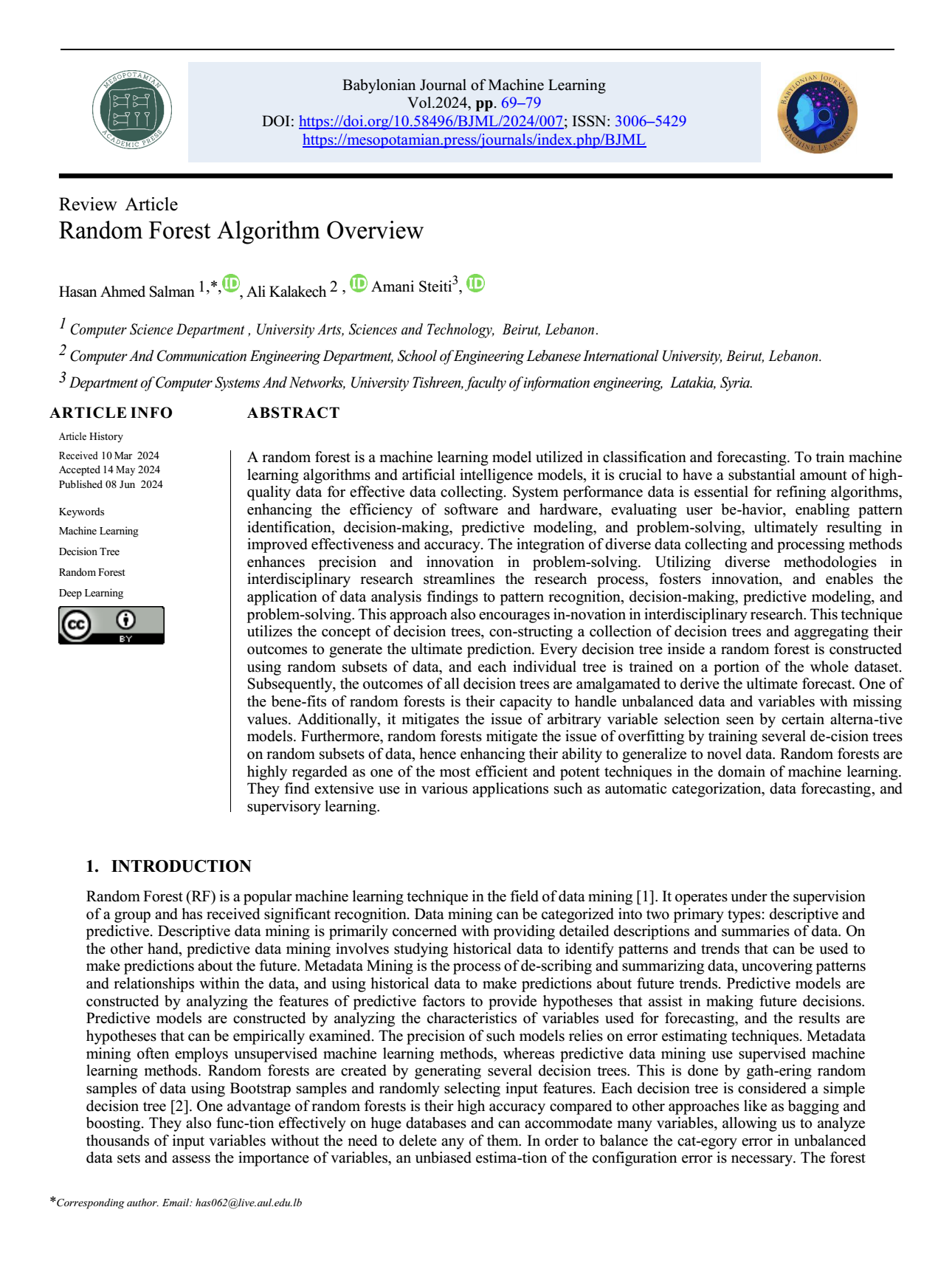Random Forest Algorithm Overview
Main Article Content
Abstract
A random forest is a machine learning model utilized in classification and forecasting. To train machine learning algorithms and artificial intelligence models, it is crucial to have a substantial amount of high-quality data for effective data collecting. System performance data is essential for refining algorithms, enhancing the efficiency of software and hardware, evaluating user be-havior, enabling pattern identification, decision-making, predictive modeling, and problem-solving, ultimately resulting in improved effectiveness and accuracy. The integration of diverse data collecting and processing methods enhances precision and innovation in problem-solving. Utilizing diverse methodologies in interdisciplinary research streamlines the research process, fosters innovation, and enables the application of data analysis findings to pattern recognition, decision-making, predictive modeling, and problem-solving. This approach also encourages in-novation in interdisciplinary research. This technique utilizes the concept of decision trees, con-structing a collection of decision trees and aggregating their outcomes to generate the ultimate prediction. Every decision tree inside a random forest is constructed using random subsets of data, and each individual tree is trained on a portion of the whole dataset. Subsequently, the outcomes of all decision trees are amalgamated to derive the ultimate forecast. One of the bene-fits of random forests is their capacity to handle unbalanced data and variables with missing values. Additionally, it mitigates the issue of arbitrary variable selection seen by certain alterna-tive models. Furthermore, random forests mitigate the issue of overfitting by training several de-cision trees on random subsets of data, hence enhancing their ability to generalize to novel data. Random forests are highly regarded as one of the most efficient and potent techniques in the domain of machine learning. They find extensive use in various applications such as automatic categorization, data forecasting, and supervisory learning.
Article Details
Issue
Section

This work is licensed under a Creative Commons Attribution 4.0 International License.
Deprecated: json_decode(): Passing null to parameter #1 ($json) of type string is deprecated in /home/u273879158/domains/mesopotamian.press/public_html/journals/plugins/generic/citations/CitationsPlugin.php on line 68
